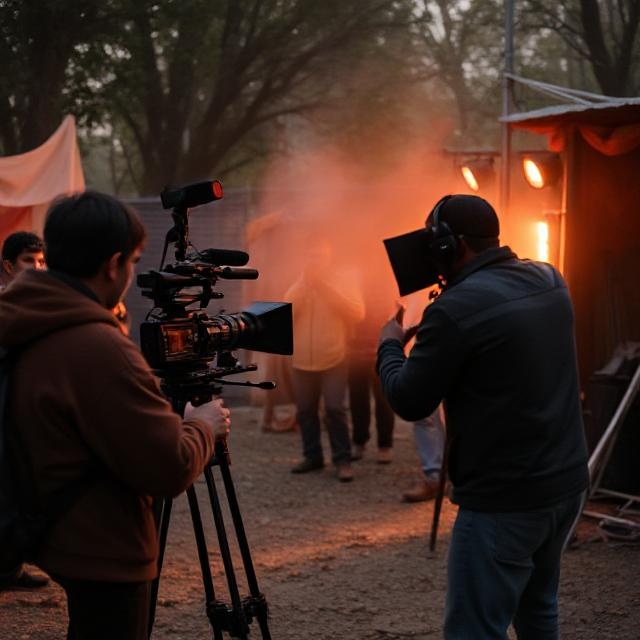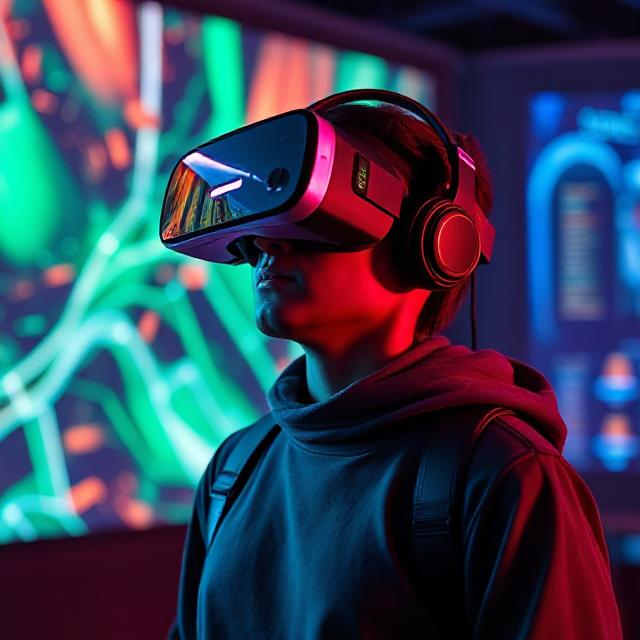The film industry has long been synonymous with innovation, from the introduction of sound and color to the rise of digital filmmaking and special effects.
However, one of the most revolutionary changes in recent years is the advent of Virtual Reality, a technology that is transforming storytelling as we know it.
With VR, filmmakers can create immersive 360° narratives, allowing audiences to not just watch a story but to step inside it.
A New Dimension In Storytelling
Traditional filmmaking confines viewers to a rectangular screen, dictating their perspective and focus. VR, however, shatters these boundaries.
With 360° storytelling, audiences are placed in the heart of the action, free to explore the environment from every angle. This newfound freedom not only enhances engagement but also opens up new creative opportunities for filmmakers.
For instance, instead of relying solely on cuts and edits to guide the audience, VR filmmakers use spatial audio, lighting, and environmental cues to subtly direct attention.
This approach requires a shift in both narrative structure and production techniques, fundamentally altering how stories are conceived and told.
The Impact On Filmmaking Techniques
The shift to VR filmmaking brings with it unique challenges and opportunities. Traditional cameras and shooting setups are often insufficient for capturing a 360° scene. Instead, specialized 360° cameras are used.
This eliminates the need for multiple takes and setups but demands meticulous planning to ensure no unwanted elements appear in the shot.
Post-production is another area where VR has a significant impact. Editing 360° footage requires specialized software that allows editors to work with spherical video.
Furthermore, integrating elements like CGI and special effects in a VR environment is far more complex, as these elements must blend into the immersive world.
This is where platforms like Nextech3D can play a pivotal role. Their advanced 3D modeling and augmented reality tools can be used to create hyper-realistic environments and assets.
Redefining Audience Engagement
One of the most exciting aspects of VR storytelling is its potential for unparalleled audience engagement.
Traditional films are passive experiences where viewers watch events unfold from a fixed perspective. VR, on the other hand, makes storytelling interactive. Viewers can explore a scene, interact with objects, and even influence the narrative.
Consider a VR film set in a haunted house. Instead of following a predetermined camera path, viewers can wander through the house, discovering clues and uncovering the story at their own pace.
This level of engagement creates a deeply personal and memorable experience, setting VR apart from any other medium.
Applications Beyond Entertainment
While entertainment is the most obvious application for VR filmmaking, the technology has far-reaching implications across various industries.
Education, for example, can leverage VR films to create immersive learning experiences. Imagine a history lesson where students can "walk" through ancient Rome or witness a historical event firsthand.
Similarly, VR storytelling can revolutionize training and simulation. In fields like healthcare, aviation, and the military, VR films can provide realistic scenarios for trainees to practice in a safe and controlled environment.
Nextech3D’s cutting-edge technology can enhance these applications by providing realistic, interactive 3D environments that mimic real-world conditions.
Challenges And Future Prospects
Despite its potential, VR filmmaking is still in its infancy and faces several challenges. The cost of VR equipment and production is high, limiting accessibility for smaller studios and independent filmmakers.
Additionally, creating compelling VR narratives requires a steep learning curve, as traditional storytelling techniques don’t always translate well to an immersive medium.
However, as technology evolves and becomes more affordable, these barriers are likely to diminish.
Platforms like Nextech3D are already making strides in democratizing access to advanced 3D and AR tools, empowering creators to push the boundaries of what’s possible in VR storytelling.






